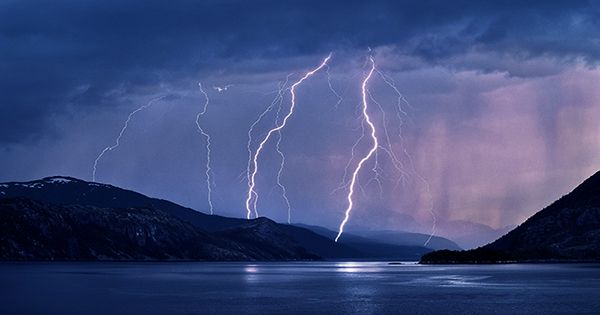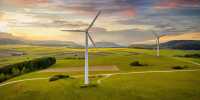Lightning strikes are very rare in the Arctic Circle – but as the global climate warms, these events become more common.
In 2019 alone, the light pole hit 483 kilometers (300 miles) north of the North Pole, the best example on record. New research suggests that the amount of illumination will double in the next decade. As nature reports climate change, researchers have modeled the incidence of lightning at high latitudes and discovered that by the end of the century these expected to increase by almost 100 percent.
Lead author Dr Yang Chen, from the University of California, Irvine, said in a statement, “We predict how electricity will change in high-latitude boreal forests and Arctic tundra regions across North America and Eurasia.” The work looked at changes in lightning intensity in the north of the world between 1986 and 2005. The team matched it with other climate factors and saw a relationship between them. Using models looking at the future effects of the climate crisis, they created an expected rate of lightning in the Northern Hemisphere between 2081 and 2100. They saw that as you move further north, the amount of lightning strikes increases more clearly.
The starting point of this study was not exactly illumination, but fire. In particular, the team witnessed fire incidents in Alaska in 2015. This year, 5.1 million acres of tundra and forests were burn by an incredible 770 – the worst years on record for the state. James Randerson, a professor and co-author of UCI’s Department of Earth Systems Science, added, “2015 was a year of exceptional fires with a record number of fires.
“One of the things we thought was that lightning was responsible for breaking the fire record.” The link between lightning and wildfires related to a variety of factors. A large swath of soil in the Arctic Circle is permafrost, a perennial frozen land that stores large amounts of organic carbon, which is now at risk of melting for a number of reasons. Lightning and dry conditions increase the likelihood of wildfires.
This results in more permafrost melting, more carbon dioxide and methane emissions into the atmosphere, which will increase with global warming. In addition, according to this work, it increases the frequency of lightning. This is a vicious cycle. The team hopes their model will lead to further monitoring of lightning and wildfires in the Arctic.














